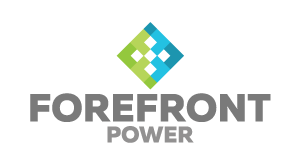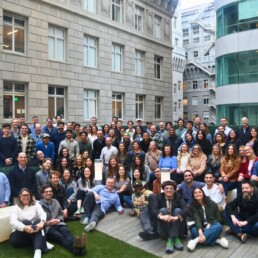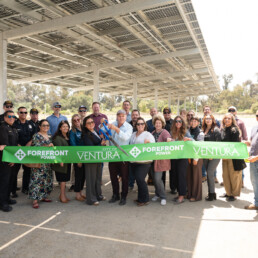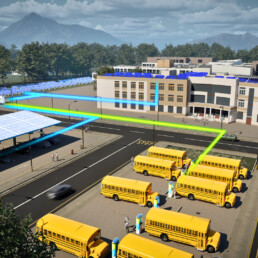In honor of Veteran’s Day, we interviewed Nate Roberts, who is a U.S. Army veteran and ForeFront Power’s Vice President of National Behind-the-Meter Development.
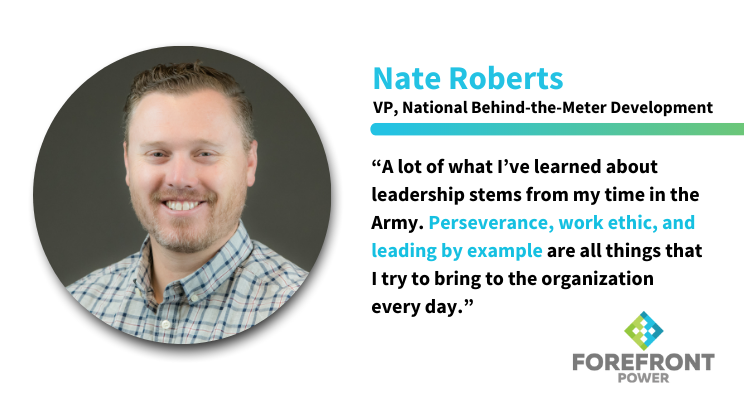
Where are you from originally?
NR: I’m originally from San Diego, California. I grew up in the Pacific Beach and Clairemont area of San Diego. Growing up I played soccer and I loved time at the beach. I attended San Diego State University. While attending school, one of my roommates was an U.S. Army soldier, enrolled in San Diego State’s ROTC program. This friendship was my first experience with someone in the military who was close to my age, and had similar interests and background.
What do you like to do in your free time?
NR: Soccer. I played soccer my whole life. As a kid my favorite player was Zinedine Zidane. Now I’m more neutral and I just appreciate watching the game. I still contribute to the sport. I coach youth soccer at the Club level and I donate time with a volunteer organization aimed at enriching community involvement and community contributions to the sport in general and creating a more inclusive and equitable soccer environment within our community. My 3 kids also play Club soccer and my wife is very supportive and helps manage a very crazy schedule week in and week out. My kids all play at different levels and they all have different commitments. But every day is a soccer day in our house.
Who was one of your childhood heroes? Who inspired you?
NR: My father was a big influence in my life. He faithfully served in law enforcement for 30 years and was a narcotics officer for the State of California. As a kid I wanted to follow in his footsteps. I thought that was the path I wanted to pursue when I majored in criminal justice in college. I interned with a narcotics task force and it was exciting because it required critical thinking and working outdoors instead of behind a desk. What I liked most about that internship was knowing I was contributing to society for a cause greater than myself. With that same sentiment, and in an effort to gain some real-life experience and relevant operational skills, I joined the U.S. Army after college.
What was your experience in the U.S. Army like?
NR: When I joined the Army, I completed basic training then went to Officer Candidate School, at Fort Benning, Georgia. I was Commissioned as an Infantry Officer and immediately attended Airborne and Ranger school at Fort Benning. After I graduated from both Airborne School and Ranger School in 2003, I relocated to my unit at Fort Drum, New York, and was almost immediately deployed to Baghdad in support of Operation Iraqi Freedom from June 2004 to June 2005. I served as an Infantry Platoon Leader and managed a platoon of roughly 40 Infantry soldiers in combat, executing combat operations in and around Baghdad from traffic points and security to cordon and searches to direct action raids for listed targets.
A lot of what I’ve learned about myself and leadership stems from my time in the Army and from learning from those around me, admiring their discipline and work ethic and their attention to detail. Perseverance, work ethic, and leading by example: these are all things that I continue to hold as a high standard for myself and try to bring to the organization every day. The perseverance that’s required in this job is different from the perseverance that’s required as an infantry soldier in combat, but the concept remains the same. Just because things get hard doesn’t mean you give up. You keep thinking and working toward your goal.
How did you end up working in the energy field?
NR: Once I returned to the States, I met with a recruitment firm that helped place transitioning military officers from the Army to civilian life. I actually started by working for a construction company. I was a superintendent building tract homes in Southern California. Although construction was new to me, I enjoyed being challenged in a way I had never been challenged before. When the housing market got hit and construction jobs were lost, I sought out another job with a general contractor in commercial construction building hospitals, hotels, casinos, clean labs, and more complex projects.
While working in the general contracting space I made relationships that led me to my first job in solar as a construction project manager. There was a lot I could bring to the table since managing solar construction projects is fairly similar to managing other types of construction projects I was involved in at the time. In the solar space I started noticing there were aspects of working for an asset owner like ForeFront Power that really appealed to me. I was interested in things like pre-construction, development, and thinking through what problems may arise when you build a project and how to solve them while still in the conceptual phase.
What do you do in your current role at ForeFront Power?
NR: By title, I’m the vice president of development for our behind-the-meter product type, so I manage all behind-the-meter projects in North America. These are the projects that are built on a customer’s facility that offset a customer’s specific energy load. I supervise and oversee all pre-construction activities, including site development, entitlement and permitting, as well as all construction activities, including procurement, installation, start-up, and commissioning. I also have multiple teams that address the multiple market spaces within the U.S. specifically. Once an energy service Agreement is signed, I use this Army metaphor: Right side ride/Left seat ride. We start out in the passenger seat and we complete the project in the driver’s seat. When a project’s in the pipeline and the origination team is trying to get that project to an executed contract, my team’s in the passenger seat providing support. We identify permitting risks, entitlement risks, technical risks, environment risks, real estate risks, and any others that might come up. Then when the contract is signed, we come into the driver’s seat and take the project from the executed energy services agreement into commercial operation. We get the project to a point that we can hand it over to the asset management team that manages live operational projects. Our team touches the project for the longest and we wear the most hats. It’s a role that really requires us to be cross-functional and fluent in several areas of the solar space.
Do you have any memorable projects you’ve worked on?
NR: We’ve helped projects overcome some major environmental hurdles to ensure we have an installation and operation that is as safe, seamless, and efficient as possible — even in hazard zones where avalanches, tsunamis, earthquakes, high wind events, soil liquefaction, and flooding might occur. There was one project in the Northeast U.S. where we had to become intimately familiar with a threatened species — the Northern long-eared bat, Myotis septentrionalis. We had to conduct environmental studies to determine the extent of the bat’s “hibernacula,” or winter quarters, as well as its maternity roost trees.
What’s your favorite part of the job?
NR: My favorite part of my role at ForeFront is helping to establish the process and procedure for developing our projects and seeing our teams execute it successfully. My favorite part of a project is commissioning, startup and performance testing, showing our project is working and doing what it’s supposed to be doing for our customers. I enjoy seeing a project go from a thought in a customer’s head through permitting, entitlement, construction, and then ultimately a tax equity transaction. It amazes me how these small words on paper plans turn into this big tangible project that produces energy.
What’s the most important thing you would like the world to know about ForeFront Power?
NR: We take pride in delivering the best project we can every single time, no matter the size, the customer, or the location. We’re always trying to make the next project better in all areas of what we do, from how fast we can get it permitted, to the modules we use and how efficiently we install the project. We won’t build something that we’re afraid to put our name on.
Do you have any advice you would give to people just entering the industry?
NR: I would tell someone trying to enter the industry to learn as much as you can about all the different swimlanes in the pool of solar or renewable energy. Understand what happens on a project from soup to nuts and how delivering one project impacts the next one and every project that follows. Don’t be siloed in the job that you’re going to be doing at first as a newcomer to the industry. That’s going to change. Your job will change. The more you can learn about all the different aspects of delivering a renewable energy project, the better suited you’ll be able to take on your evolving role.
Interested in learning more?
We would love to discuss how our solutions might be a fit for your organization. Contact one of our solar, storage, or e-mobility experts today:
